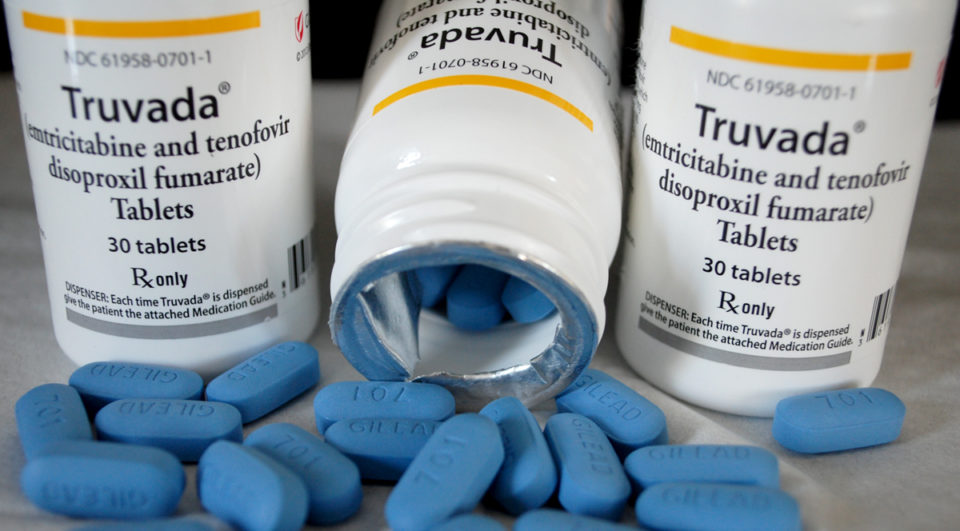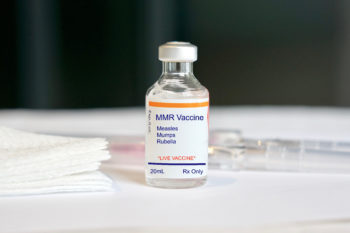It’s not a vaccine, but it can reduce your chances of getting HIV by over 90 percent.
Truvada®, produced by Gilead Sciences, Inc., is a medication that is commonly used as part of combination therapy to treat HIV infection. However, HIV-negative people also can take it as a daily pill to reduce their risk of getting HIV infection in the first place.
This strategy, known as pre-exposure prophylaxis, or PrEP, involves HIV-negative people taking the medication daily to help protect them from getting HIV if they are exposed to the virus by a sexual or injection-drug-using partner who is HIV-positive. Prophylaxis means to prevent or control the spread of an infection or disease.
“PrEP can help someone prevent getting HIV if the person is exposed to the virus,” said Patrick Loose, chief of the HIV, Sexually Transmitted Disease, and Hepatitis branch for the County Health and Human Services Agency. “PrEP is an HIV prevention medication that works by taking one pill every day and has the potential to significantly reduce new HIV infections.”
How does it work?
Truvada® contains two medicines that have been used for years for the treatment of HIV in combination with other medications. In several studies, HIV-negative individuals who took the Truvada® alone consistently had a much lower risk of getting HIV—up to 92 percent lower— than those who did not take the pill. PrEP was much less effective for those who did not take it consistently.
PrEP can be prescribed only by a doctor or health care provider, so talk to yours to find out if PrEP is the right HIV prevention strategy. Also, you must take an HIV test before beginning PrEP to be sure you don’t already have HIV and every 3 months while you’re taking it, so you’ll have to get regular follow-ups. Before you start PrEP, your doctor will also test your kidneys to make sure they are working well.
June 27 is National HIV Testing Day, a good time to visit your doctor, get an HIV test, and start a conversation about taking PrEP, if needed.
In San Diego County, one in ten people who are infected with HIV are not aware of it. This means that they are not getting HIV treatment to stay healthy and could infect others.
PrEP is a powerful HIV prevention tool and can help us to get to zero new infections.
Dr. Wilma Wooten, County Public Health Officer
Who would benefit from PrEP?
The federal guidelines recommend that PrEP be considered for:
- People who are HIV-negative and in an ongoing sexual relationship with an HIV-positive partner.
- Gay or bisexual men who are HIV-negative, are not in a monogamous relationship and engaged in high-risk sexual practices or been diagnosed with an STD in the past 6 months.
- Heterosexual men or women who are HIV-negative, are not in a monogamous relationship and do not regularly use condoms during sex with partners of unknown HIV status who are at substantial risk of HIV infection (for example, people who inject drugs or women who have bisexual male partners).
- People who have injected drugs in the past 6 months and have shared needles, work in drug treatment centers, or have been in treatment in the past 6 months.
- Women who are HIV-negative and have a partner who is HIV-positive and are considering getting pregnant.
“PrEP is a powerful HIV prevention tool and can help us to get to zero new infections,” said Wilma Wooten, M.D., M.P.H., County public health officer. “When PrEP is combined with condoms and other prevention methods, the risk of HIV infection is much lower. However, people should not stop using condoms because PrEP does not offer any protection against other sexually transmitted diseases like syphilis, chlamydia and gonorrhea.”
How do I pay for PrEP?
PrEP is covered by many health insurance plans, and a commercial medication assistance program provides free PrEP to people with limited income and no insurance.
“Talk to your doctor to see if PrEP is appropriate for you,” added Loose. “Have that conversation now and help us stop the spread of HIV.”
What happens if I am not on PrEP but am exposed to HIV?
As the name implies, the idea of PrEP is for the medication to be in your system before you may be exposed to HIV.
If you are not on PrEP and have a sexual or needle-related exposure to HIV, you can still take action to reduce your risk of HIV infection. Post-exposure prophylaxis, or PEP, involves taking a full HIV treatment cocktail for 28 days after an exposure to HIV in order to help prevent HIV infection. PEP is not effective if it is started more than 72 hours after exposure, so it is critical to seek medical attention immediately after an exposure.
PEP is available through most health care systems and also is available through medication assistance programs, but it is important to seek attention right away to make sure that you are able to start the medications within 72 hours of the exposure.
If you are still HIV-negative after finishing a course of PEP, then you could start PrEP with Truvada® to protect you against any future exposures to HIV.
For more information about PrEP, visit the CDC PrEP resources page for infographics, videos, fact sheets, reports, and other educational materials, including resources for health care providers.






